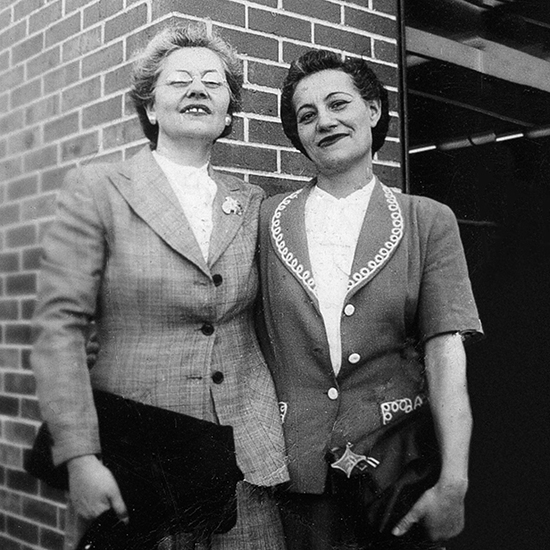Diving into the 1950 Census data
The National Archives released the 1950 US Federal Census records on April 1, 2022. Researchers, including us preservationists, excitedly anticipated this release and have been happily playing with the available databases from the National Archives and Ancestry.com to see what we can discover.
On April 1, I set out to find my grandparents and my infant father. At that time, not all states had yet been digitized on Ancestry, so I searched https://1950census.archives.gov. I quickly discovered that a name search doesn’t always work. After finding an address in a city directory, I searched the address on a current map, correlated that to the census enumeration district map, searched for the district in the National Archives database, and then went through every page until I found the family. Phew. Exhausting, but worth it!
As of April 20, Ancestry.com has records for all states digitized, but not indexed. This means, names may not yet be searchable. However, they have a very handy searchable map that allows the user to input an address. The search function pulls up the enumeration district, saving a lot of time. Instead of a couple of hours to find family, I found a different set of people in a few minutes.
The census asked standard questions seen in earlier decades: address, names, race, sex, marital status, state (or foreign place) of birth, citizenship status. Half of the questions relate to employment: employment status, looking for work, hours worked a week, kind of work and where, and whether it was for a private company or government. Gone are the questions about parents’ places of birth, home ownership, and personal wealth. One interesting note was that the census takers noted when people were not home to canvass! Luckily, for me personally anyway, they went back at a different time and retrieved the information later when, say, my great-grandparents happened to be home next. The National Archives records are free to access, and you can sign up to transcribe names to make them searchable in future. Although Ancestry.com usually charges to access records, they are currently allowing free access to the 1950 census records.
Besides the obvious interest in finding family members, the 1950 census records give us ideas about where people settled immediately after World War II. New housing developments (which are now old enough to be listed in the National Register) began to be built in earnest following World War II. Some of the earliest ones could show up here, helping to document significance of postwar housing. Postwar employment trends come to light, as well. The ages of people (mostly men) in the census coupled with employment status, tells us how easy or difficult it was to find work as a veteran. Similarly, as men returned home, women often gave up work. We begin to see this shift, as well. These records also help to illuminate another piece of history related to people significant to our collective past and our personal past. For instance, I knew my grandfather was a fireman, but I had no idea he worked so many hours a week! His wife, who worked during the war, became a stay-at-home mom. Conversely, my other grandmother remained employed (although my mother wasn’t born for another year). Broader trends we’ve read about in books or learned through lectures or podcasts come to light with the data seen in these records.

